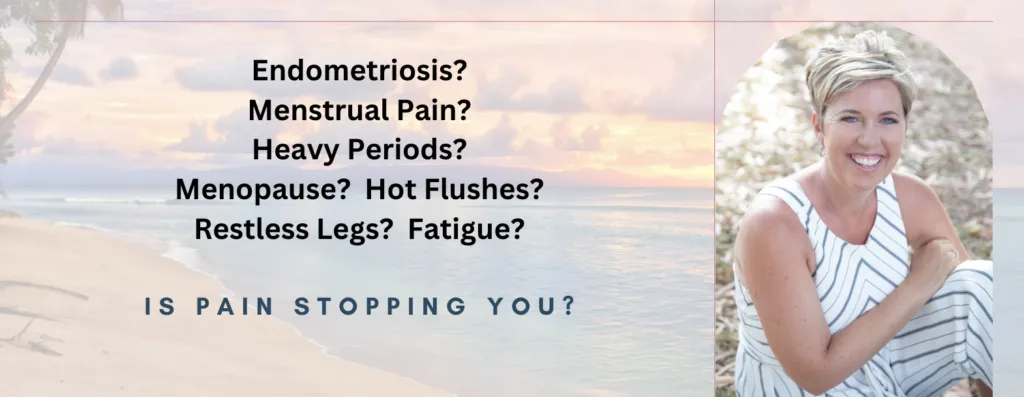How to Stop Being Triggered: Managing Outside Influences Effectively
How Energy Medicine Can Transform Chronic Pain into Purpose
Published: November 12, 2024

Personal Goals:
Spend more time with the family
Make self-care a priority
Go on a holiday at least once a year
OR
Professional Goals:
Gain more clients or custom
Earn more money
Explore further avenues
BUT... None of this is happening!
There are probably many legitimate reasons including a fully packed life that is blocking you from smashing those goals but...
Have you ever considered that perhaps they are just excuses? After all, it’s much easier to think about them, even write them down under the pretense you are "going after them". It's almost like you are telling yourself...
"I am going to accomplish these goals this year, don't you worry self, it's going to happen."
but then...
"Why is everything so complicated and hard... I never have enough time to get where
I want to go..."
The thing is it's so much easier to blame time, family commitments, or the dog. What you may not know is you could have real blocks that are contributing to the stalemate of achieving your goals rather than procrastination
(lightbulb moment!)
While there may be numerous obstacles standing between you and your goals, they are not insurmountable. By acknowledging and addressing these barriers head-on, you can empower yourself to break through limitations and achieve success. Stay focused, stay determined, and never underestimate the power of your own resilience and determination. Your goals are within reach –
all it takes is the courage to pursue them relentlessly.

We’ve all experienced those moments when a word, action, or event pulls us into an emotional spiral. Perhaps someone’s comment feels like a personal attack, or a stressful situation at work sends us straight into frustration. These intense emotional reactions, often referred to as “triggers” can disrupt our peace and cloud our ability to respond thoughtfully.
The good news is, triggers don’t have to control your life. In this article, we’ll explore how you can recognise, manage, and ultimately reduce the power of these emotional triggers, allowing you to reclaim your inner calm and manage external influences with grace.
Triggers are personal. What sets one person off may not even register for someone else. Most of these emotional reactions stem from unresolved feelings, past traumas, or unmet expectations. The key to managing them starts with identifying the root cause.
TIPS
Journal Your Reactions: Write down moments when you felt triggered. What was the situation? How did it make you feel?
Identify Patterns: Look for recurring themes, does it relate to a fear of failure, abandonment, or being misunderstood?
Reflect on the Past: Many triggers connect to unresolved experiences from childhood or previous relationships. Understanding these connections is the first step toward healing.
Not all emotional triggers can be avoided, but you can take steps to reduce unnecessary stressors and protect your mental energy.
Limit Your Exposure: If certain people, situations, or social media regularly trigger you, limit or avoid them when possible.
Communicate Your Needs: If someone’s behaviour repeatedly triggers you, calmly let them know how it makes you feel and request a change.
Practice Saying ‘No’: Boundaries are essential. You have the right to say no to situations that cause unnecessary distress.
Managing triggers is a lifelong practice. There will be days when you respond with grace and others when the emotions still take over, and that’s okay. The goal isn’t perfection but progress.
Acknowledge Small Wins: Did you take a breath instead of snapping back? That’s progress.
Reflect and Adjust: Use every triggering experience as a learning opportunity. What worked? What didn’t?
Be Patient with Yourself: Healing and emotional growth take time. Trust the process and be kind to yourself along the way.
Learning to manage your emotional triggers is one of the most empowering things you can do for your mental well-being. It’s about taking back control, choosing how you respond instead of reacting impulsively. By understanding your triggers, setting boundaries, and cultivating mindfulness, you create a life where outside influences no longer dictate your emotional state.
Remember, every time you pause, reflect, and respond intentionally, you’re building emotional resilience. With time and practice, those triggers that once felt overwhelming will lose their power, leaving you feeling grounded, balanced, and free.
Chronic pain is often seen as a curse—a relentless burden that dims joy, disrupts life, and leaves people feeling trapped in a cycle of discomfort. However, energy medicine offers a powerful reframe: what if pain isn’t just something to manage or escape, but a message from your body? And beyond that, what if it could be the key to a deeper purpose? Energy medicine provides tools to not only alleviate pain but also help individuals find meaning and direction through their experiences.
The Science and Spirit of Energy Medicine
At the core of energy medicine is the idea that everything—our bodies, thoughts, and emotions—is energy. Pain, in this light, is viewed as an energetic blockage or imbalance. Rather than merely dulling symptoms with medication, energy medicine aims to restore the body’s natural energy flow, allowing the physical, emotional, and spiritual layers to heal in harmony.
Modalities like Reiki, acupuncture, Emotional Freedom Technique (EFT), and sound healing target energy pathways such as meridians and chakras, helping release trauma, stagnant emotions, and stress that often manifest as chronic pain. When energy flows freely, pain diminishes—and new insights arise.
Pain as a Messenger: Listening to the Body’s Signals
Chronic pain is often a signal that something deeper needs attention, whether it's unresolved emotional trauma, unmet needs, or a shift in life direction. Traditional medicine treats pain as a problem to fix, but energy medicine invites us to engage with it, asking: What is this pain trying to teach me?
In my work with individuals, I’ve found that when people shift their mindset from fighting pain to listening to it, something profound happens. The pain often reveals hidden emotions, suppressed memories, or misalignments in personal or professional life. Addressing these underlying issues brings not only relief but also a sense of purpose.
Practical Tips for Harnessing Energy Medicine in Your Journey
If you’re living with chronic pain, energy medicine offers a pathway not only to physical relief but also to emotional and spiritual transformation. Here are some practices you can explore:
Reiki: Receive energy healing sessions to promote relaxation and restore balance.
Meditation and Breathwork: Focus on connecting with the body and listening to the messages behind your pain.
EFT Tapping: Use tapping techniques to release emotional blockages contributing to physical pain.
Chakra Balancing: Explore yoga or guided visualizations to align your energy centers.
Acupuncture: Stimulate energy flow through the body’s meridians for pain relief and healing.
The key is to approach pain with curiosity and compassion. As you embrace these practices, you may uncover not only relief but also clarity about your life’s purpose.
From Pain to Power
Energy medicine reminds us that pain, while difficult, can be a powerful teacher. When we shift from resisting it to working with it, we create space for profound healing and transformation. Chronic pain doesn’t have to define us—it can become the gateway to discovering our life’s purpose.
Through patience, intention, and the right energetic practices, you can reclaim your power, release suffering, and live with renewed meaning. Pain, in this light, becomes not just a challenge to endure but a journey toward wholeness.



0424-373-597
ann@annolerharris.com
Queensland, Australia
Ann Noler Harris © 2024. All rights reserved.


0424-373-597
ann@annolerharris.com
Queensland, Australia
Ann Noler Harris © 2024. All rights reserved.





